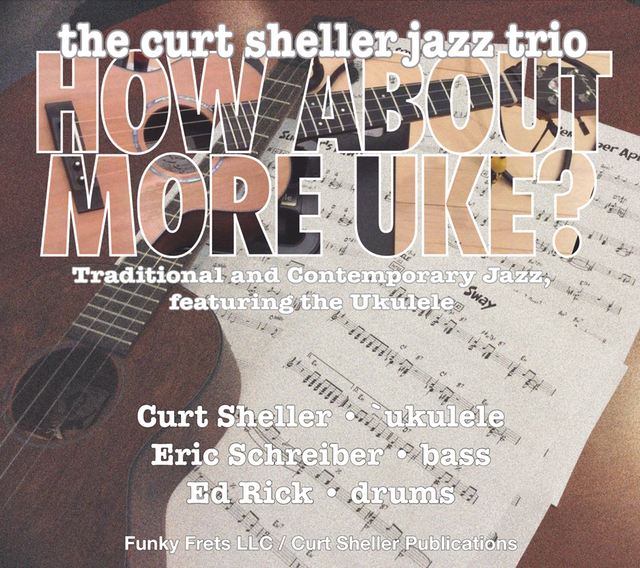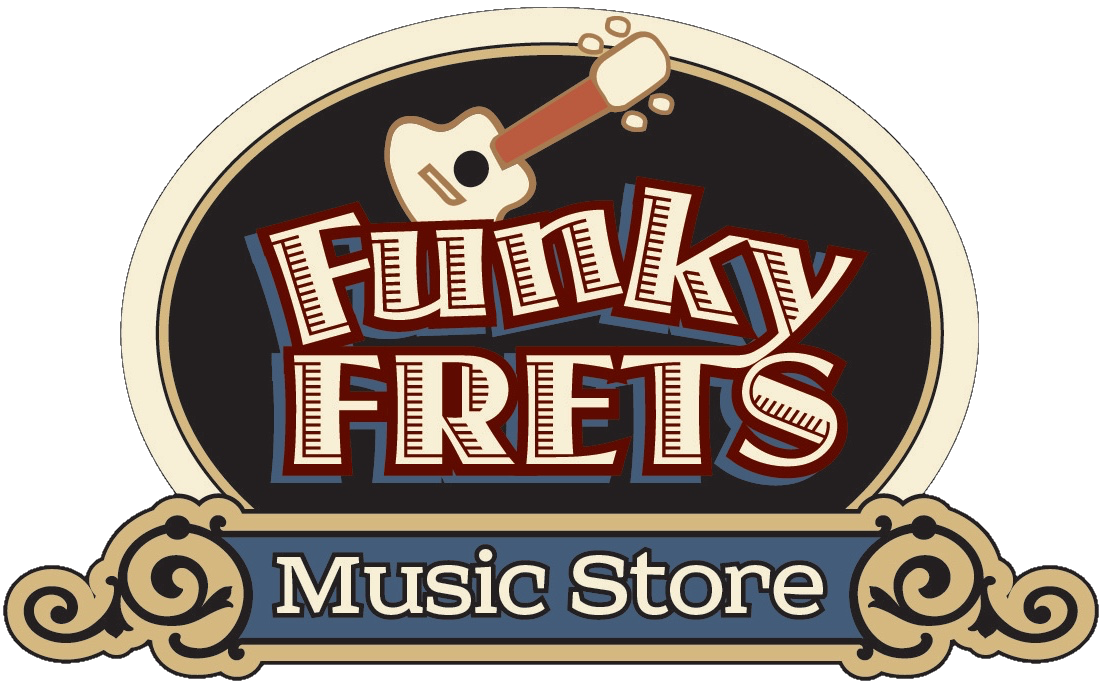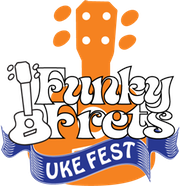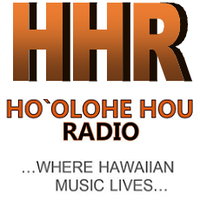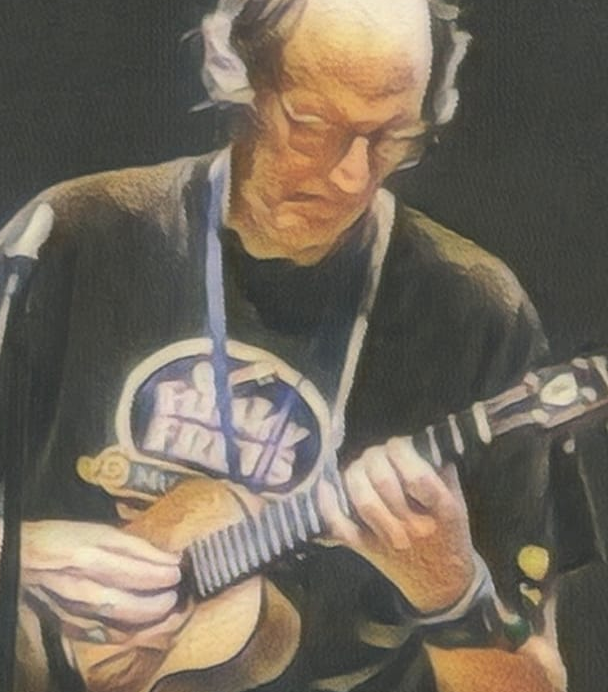- Where is That Uke Made? by MusicGuyMike • MusicGuyMike was a great fiend and resource to the ukulele community and is sadly missed.
- What Good is Learning Music Theory?
- What the heck is Em7/A? •It looks like a chord that can't makeup its mind. Is it Em?, is it A?.
- Creating 9th Chords • You can create ninth chord from any basic chord.
- Pick vs. Fingerstyle?
- Enharmonic Equivalents
- Alternate Chord Fingerings
- Curt's Tenor Ukulele Strings
My Tenor Ukulele Strings
Here (below) are the strings that I've been using on my Tenor - low "G", C Tuning (G C E A).
These are guitar strings. I got the information from David Hurd's www.ukuleles.com web site early in my exploration into the ukulele.
Here is a link to a page on Tunings for the 4-String Tenor.
The strings the mentions are more guitar like. I really like them. They ARE guitar strings.


Thomastik-Infeld Classic-N Strings
Abe Lagrimas came through Funky Frets during his 2018 east coast tour for a concert and workshop, and I noticed a different C string when I played his Ko'olau CS tenor, the same model I play. Abe was using a Thomastik-Infeld CF27 – 3rd string (g) .027 Chrome Steel Flat Wound string for his C string. It had great balance and didn't wear out as quick at the frets as a round would string typically does.
I use a low G, so I got the CF27 for the C string three as well as a Thomastik-Infeld CF30 - 4th string (D) .030 Chrome Steel Flat Wound for a low G. I play a Ko'olau CS tenor as well and this string combination is great. I don't know why I didn't consider Thomastik-Infeld before, I've been using their guitar strings on my guitars for decades. A bit pricey, but given that you use less of them, over time it is well worth it.
The Curt Sheller Custom Tenor Uke Set is a combination of singles from two Thomastik-Infed Classic Guitar sets. The Classic N Supernova and The Classic Guitar sets.


C Tuning, Low G
The below custom string sets are what I'm currently using for my two Ko'olau CS Tenors in Low G, C tuning
. For my Solid Koa Top, Tenor Fluke it prefers Ko'olau Golds or Ko'olau Golds Manaha strings.
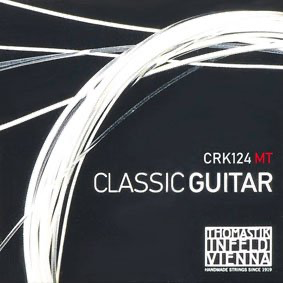

$20 USD
Ko'olau CS Tenor Tenor Ukulele Set
Thomastik-Infeld String Option
Curt's custom set is available at Funky Frets Music Store, Boyertown, PA USA and on the on-line store .
- String 1 — Thomastik-Infeld Classic Guitar, Carbon Nylon Hybrid Material CPK24 (.024in/62mm, 19.40lbs/8.80KG) tuned to A (A4)
- String 1 — Thomastik-Infeld Classic Guitar, Carbon Nylon Hybrid Material CPK27 (.027in/69mm, 14.55lbs/6.60KG) tuned to E (E4)
- String 3 — Thomastik-Infeld Classic-N Supernova CF27 Chrome Steel Flat, .027, 039 (.027in/69mm, 14.20lbs/6.50KG) tuned to C (C4) a.k.a. Middle C
- String 4 — Thomastik-Infeld Classic-N Supernova CF30 Chrome Steel Flat, .030, 039 (.030in/76mm, 14.70lbs/6.50KG) tuned to G (C3) a.k.a. Low G in the Uke world
Tension Note: This set is a higher tension, so be sure to verify with the manufacture or builder that the ukulele can handle it.


$20 USD
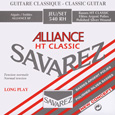

$20 USD
Tenor Ukulele Set
Savarez Alliance String Option
This are the strings I used prior to 2022 an are still a great option, I only switched because of my access to TI strings and my personal preference for the flat-wound option. The gauges, the material, the feel are the same for the plain strings.
- String 1 — Savarez Alliance KF Plain Treble Standard Tension .024, 541R (.024in/62mm, 17.44lbs/7.9KG) tuned to A (A4)
- String 2 — Savarez Alliance KF Plain Treble Standard Tension .027, 542R (.027in/62mm, 13.02lbs/5.9KG) tuned to E (E4)
- String 3 — Thomastik-Infeld Classic-N CF27 Chrome Steel Flat, .027, 039 (.027in/69mm, 14.20lbs/6.50KG) tuned to C (C4) a.k.a. Middle C
- String 4 — Thomastik-Infeld Classic-N CF30 Chrome Steel Flat, .030, 039 (.030in/76mm, 14.70lbs/6.50KG) tuned to G (C3) a.k.a. Low G in the Uke world
C Tuning, High G
This is the set that (Curt) currently recommends for tenor ukuleles in C Tuning with a High G
.
Strings are one area where different ukuleles might prefer different strings. A ukulele can be very opinionated as to the stings that it likes and brings out its best. Basically, your mileage might vary.
For my (Curt) Magic Fluke Solid Top Tenor Fluke I use Ko'olau Golds. I have a few sets left for personal use, as these are discontinued.

- String 4 — Thomastik-Infeld Classic-N, Carbon Nylon Hybrid Material CPK24 (.024in/62mm, 19.40lbs/8.80KG) tuned to G (G4)
Strings one, two, and three are the same as the Low G, C Tuning sets above.

Enharmonic Equivalents
I recently purchased the referenced book (A Guide to Ukulele Chords) and noticed on page 46, under the subject "Learning the Fingerboard" E# is shown under fret 1 and Fb under fret 4. I'm confused? My understanding of the musical scales is that there are no sharp or flats between E and F and B and C since they are natural half steps. Am I wrong?
You're right, there are not note between EF and BC, there's a natural half step between E and F as well as B and C. But — any one of the seven letters of the musical alphabet can be sharped or flatted. There's even exists double flats and double sharps and theoretically even triples. These Enharmonic spellings are needed for the correct scale and chord spelling of particular scales and chords. It all depends on context.
A good example is the key of C#, not a very common key but, ALL seven letters are sharped, C#♯, D#♯, E#♯, F#♯, G#♯, A#♯, B#♯, C#♯`. The same would be true of C♭ where all seven letters are flatted C♭, D♭, E♭, F♭, G♭, A♭, B♭ C♭`.
Scale theory states that a letter can not be skipped or repeated in seven note diatonic scales. The major scale is one of the diatonic scales and the basis for the major keys.
There are 12 notes in one octave but there are 15 keys. Three keys have “Enharmonic Equivalents”. C♯/D♭, F♯/G♭, B/C♭.
There is a little more to it than the above. But the bottom line is that there are notes called E♯, F♭, B♯ and C♭. There are called “Enharmonic Equivalents”. Both E and F♭ produce the same pitch but are represented by differently when written in standard music notation.
The E is far more common than F♭ and B more common than C♭. Sometimes they're even used when the correct notation would be the F♭ for E or the C♭ for B. This is done for ease of reading.
Here is a link to a UkuleleLesson: that talks about Enharmonic Equivalents
Alternate Chord Fingerings
There are no hard and fast rules for fingering chords as everyone's hands are different and different musical situations might require alternate fingerings. String spacing, string size and scale length also impact fingering choices.
There are alternate fingerings for most chords as well as alternate voicings. I advocate that one should be able to play most chords with alternate fingers for specific music possibilities. If there is no musical reason for fingering a note or notes why do it. Wasted energy, although small, still wasted.
Eb major at fret (3) is typically fingered 1 1 1 4 then naturally your barre will include string 1. But, depending on how flexible your joints are and using D at fret (2) as an example I can barre string 2 3 and 4 at fret (2) and have string 1 open. This is a tough fingering but possible.
Finger chords for what they ARE at the time and try to use the most efficient fingering and effort, taking in to account the next chord. Not - for possibilities that I may or may not do.
For fingering chords and scales if there is not an overwhelming musical reason for something then do the most efficient fingering.
Other than the voice and rhythm, playing a musical instrument is not something that happens naturally. So one will not automatically do what is most efficient in the beginning on their own. And, after learning something one rarely goes back and revisits it to see if efficient technique was used.
Check out the UkuleleLesson: on Chords .
Creating 9th Chords
Raise the root of any chord and you have a ninth chord. Either a 4-part 9th chords or an add9 or add2 triad.
As ninths are upper partials or extensions they like to be in the top voicing of the chord. They especially do not like being the lowest note. In those case we can displace the third by lowering, a minor third one fret or a major third two frets.
The above method does hinge on knowing the chord tones of any given chord and the notes of the fingerboard.
This IS the easiest method to use to create chords. Only the major, minor, diminished and augmented 4-part chord types need to be memorized and you can create ninth chords on the fly as well as 11th, 13th, altered 5, 11, 9 etc..
So bottom line raise the root two frets or optional displace the third if the ninth would be the lowest note and doesn't sound good.
Row 1 shows the results of raising the root of 7th chords two frets and row 2 using the options lowering of the third two frets.
.png)
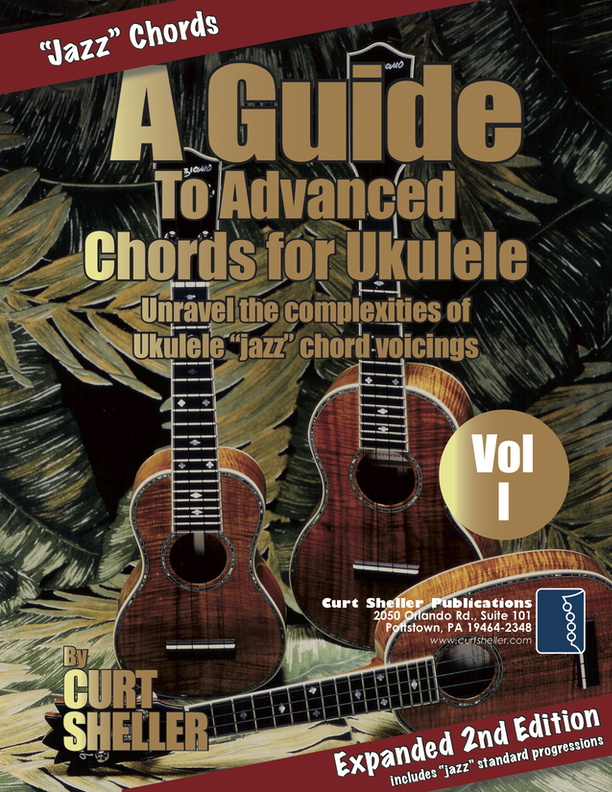 Beyond learning basic Ukulele chords most players struggle with advanced chords. Commonly called "Jazz" chords, these more sophisticated voicings find a wide use in all forms of music.
Beyond learning basic Ukulele chords most players struggle with advanced chords. Commonly called "Jazz" chords, these more sophisticated voicings find a wide use in all forms of music.
A Guide to Advanced Chords for Ukulele presents a highly organized and efficient approach to the mysterious subject of advanced chords. Chord dictionaries are not the answer. Even chord theory does not offer any insight into unraveling the complexity of Ukulele chord voicings.
If your goal is to expand your chord vocabulary, A Guide to Advanced Chords for Ukulele is your answer.
Granted, learning the notes of the fingerboard takes some time and work and learning the chord formula for chords takes time to know where the 3rd, 5th, 7th, etc are - but once done you are done and NEVER have to ask how too build ANY chord. A very liberating musical point.
I point out to students that you can't look chords up on the bandstand or at a jam.
Check out the UkuleleLesson: on Chords .
Pick style vs Finger Style on Ukulele. (my take)
As the ukulele has traditionally been mainly a rhythm-chord instrument played without a pick (we'll ignore the felt pick). As soon as picks or pick like techniques are used comparisons to the guitar are drawn.
Jake Shimabukuro uses his thumb like a flat pick for fast single note runs. He uses the same tech that a virtuoso guitar player might use, picking motion from elbow. He also has the finger-picking down.
Many virtuoso classical and fingerstyle guitarists can play fast single note runs with fingers but never as fast as most virtuoso flat-pickers of the same level.
A guitarist that I really love, Tommy Emmanuel, does it all. Finger-style with thumb pick, finger style with a pick and fingers and flat picking. It all depends on the song. James Hill has that single note with a pick down and the fingerstyle as well. The later developed after his Langley stint where they played mostly, if not always with a pick.
I have ukulele arrangements that I practice using all three techniques and each sounds different. But I have never seen anyone approach the single note speed of flat pickers using picks. Even players using a thumb pick will support the thumb pick with the index finger when doing fast single note lines treating it just like a flat pick.
I tell all students that technique is like money. "You want more than you will ever need to be comfortable. You don't want to come up short going for something musically because of your technique." You can get the technique easier than the money.
Just do all three: pick, fingers and pick with fingers and let the music determine which one you use.
Chuck Anderson has been a virtuoso jazz guitarist since his early twenties. Chuck started to expand his repertoire with classical music and ask Andres Segovia one day. "Being a virtuoso guitarist with a pick. How long would it take to get to the same level with fingerstyle?" Segovia's reply - "Not enough lifetimes." So he did his classical repertoire pick style.
So we can get good at various picking and plucking techniques. But to develop all three to a high level is a lot of work.
Some people will say that everyone is different and develop you own style. As far as technique that is false. Technique is what is the most bio-mechanically efficient way to pick, play fingerstyle and pick with fingers. If there is no overwhelming musical reason to play one way or another - there IS efficient ways to play any instrument with minimal effort and motion.
There is nothing in day-to-day life that automatically gives us good technique for playing the musical instruments I'm familiar with. It is a learned skill.
Most instruments other than classical guitar and definitely the uke do not have an established method to do stuff (technique). Pick guitar technique is probably not even 100 years old. Other instruments have centuries of established technique.
Michael Jordan said. "If you practice anything eight hours a day you are going to get good at it. Whether it is efficient or not."
Throw someone in a pool that can't swim and they might get out. Their technique won't look pretty and they are not going to made the Olympic team. But they will probably get by.
Em7/A
Em7/A is a slash chord. Technically an 11th chord. Which can contains the chord tones E G B D F# A. the 1 b3 5 b7 9 11 of a major scale.
If you know Em7 voicings then.
For 9th - From Em7 raise the root two frets for Em9 For 11th - From Em7 or Em9 raise the 3 (b3) two frets from Em11 or Em9/11
The /A (slash A) indicates that the composer wanted A to be the lowest note of the voicing. If playing with a bass player, good guitar player or piano player they will handle the low A. So you can ignore the A or try to get the A low. On ukulele the slash chord note is ignored. Some guitar player also ingore these as well.
(Ukulele Note) In high G "C" tuning there is not low A. In low "G tuning there is an A on string 4 fret (2) so 2 4 3 2 ( A E G B, 11 1 3 5) would work to get the essence of Em7/A. An eleventh chords can have an option ninth. For Em7 the ninth is F#. So 2 4 2 2 is cool (A E F# B, 11 1 9 5).
The main notes or color tones of an Em7/A chord to get the characteristic sound of the chord are the b3 b7 9 and 11 or G D F# A so for ukulele in "C" tuning a 2 2 2 0 fingering will work.
As you can see knowing how chords are created and the importance the chord tones is a powerful tool for creating chord voicings on any instrument.
Summary from ideal to get by. In fact just a basic Em or Em7 might work depending on the context.
Possible Notes for Em7/A: E G B D F# A
For Ukulele
2 4 3 2 - A E G B
2 4 2 2 - A E F# B
0 2 2 0 - G D F# A
2 2 2 2 - A D F# B
There are other possibilities up the neck. These are the open position options.
Check out the UkuleleLesson: on Chords .
 Beyond learning basic Ukulele chords most players struggle with advanced chords. Commonly called “jazz” chords, these more sophisticated voicings find a wide use in all forms of music.
Beyond learning basic Ukulele chords most players struggle with advanced chords. Commonly called “jazz” chords, these more sophisticated voicings find a wide use in all forms of music.
A Guide to Advanced Chords for Ukulele presents a highly organized and efficient approach to the mysterious subject of advanced chords. Chord dictionaries are not the answer. Even chord theory does not offer any insight into unraveling the complexity of Ukulele chord voicings.
If your goal is to expand your chord vocabulary, A Guide to Advanced Chords for Ukulele is your answer.
Why Learn Music Theory?
What Good Is Music Theory?
Music theory allows you to be literate, expanding your musical horizon, and to gives you a method for increasing your musical vocabulary.
Here are some myths regarding music theory.
- It will stifle my creativity. • Knowing music theory wasn't a problem for Bach, Mozart, Beethoven, Brahms, etc …
Resources
- Why you NEED Music Theory by Gary Ewer, B. Mus • This is a great article on why we need music theory. Gary uses an analogy of how a native English speaker learned English growing up. 1.) Learned the language in context, purely by ear. 2.) Learned the theory of English, and learned to read. 3.) Enhanced your use, and increased your ability to communicate your ideas.
Harmonic Analysis For Scale Selection And Chord Substitution
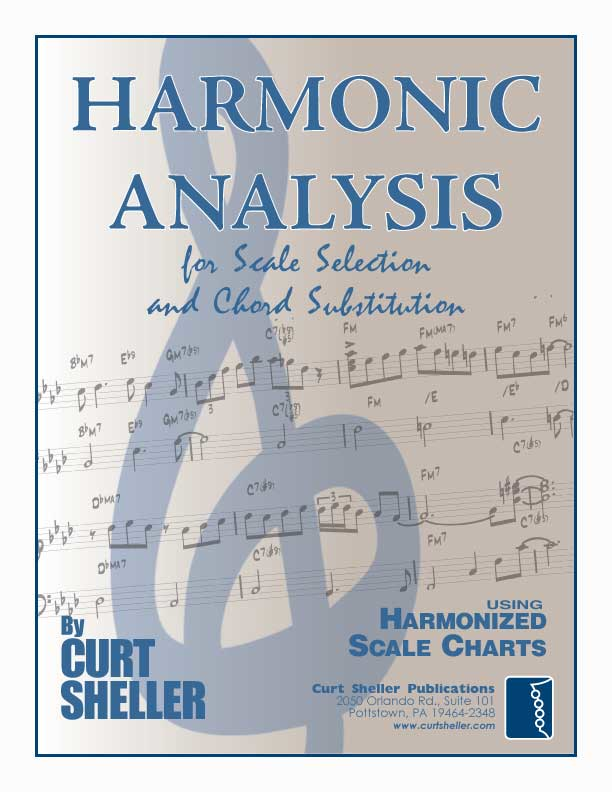 Applying harmonic analysis principles with harmonized scale charts for scale selection and chord substitution.
Applying harmonic analysis principles with harmonized scale charts for scale selection and chord substitution.
Harmonic Analysis is the understanding of the functional sequence of chords. It is the process used to analyze the harmonic structure of a progression, song or composition. This analysis is then used to make scale selections for improvisation and chord substitution.
Where Is That Uke Made?
Ever ask where is this or that ukulele made?.
MusicguyMic has answered that question on the Flea Market Music Bulletin Board.
These are Chinese
Lanikai, Ohana, Vineyard, Clear water, Stagg, Hula Ukes, Kalas, Hamano, Mahalo, Hilo, Duke Kahanomoku, Morelli, Sunburst, Bushman, Galveston. Rogue, Fortune, Tempo, Johnson, Oscar Schmidt, Leolani, OMI, Santini, Koa Pili Koko, and countless others....
These are made in Hawaii
Kamaka, Koaloha, Ko’olau , Kanilea, Gstring, Kelii, Maui Music…
Made in Phillipines
Hana, Mele, Nice
Made In Korea
some Bugsgears, Applause, Kiwayas some older models…
and the list goes on …
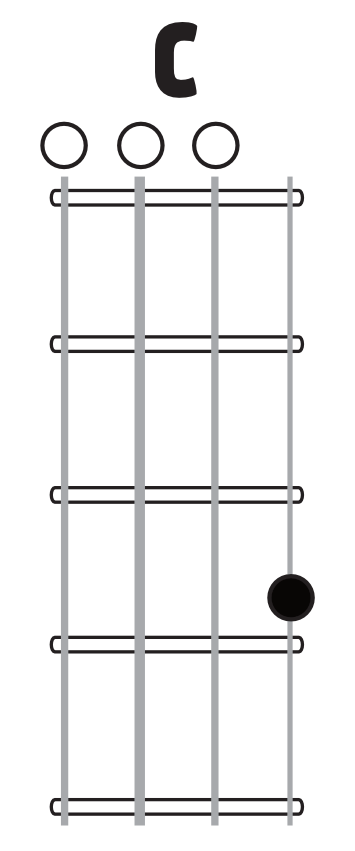

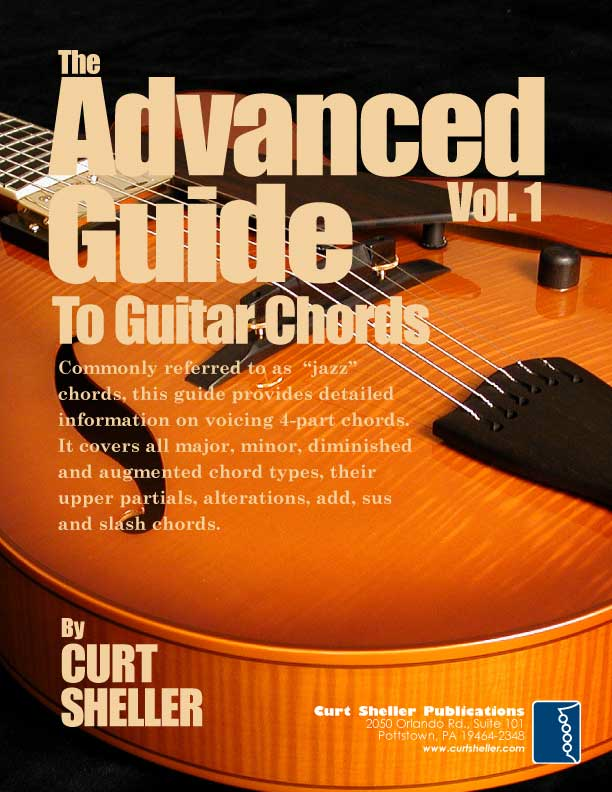
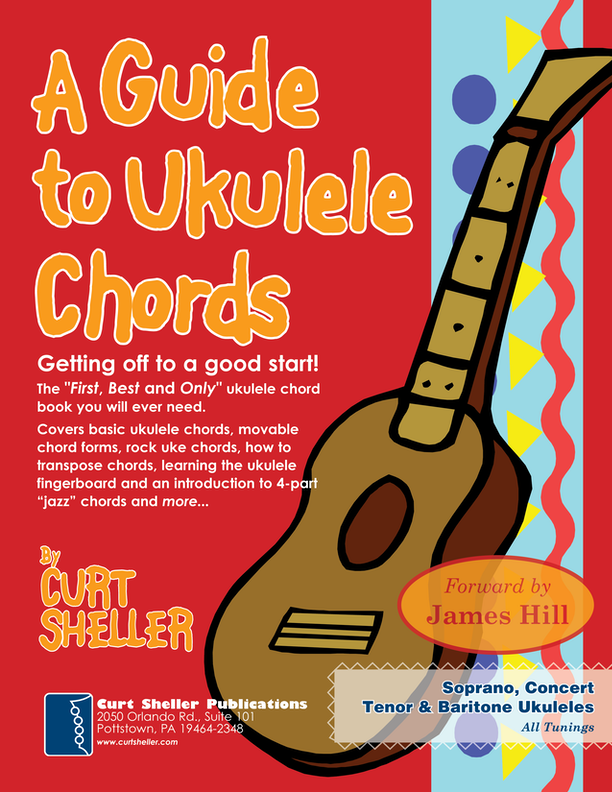
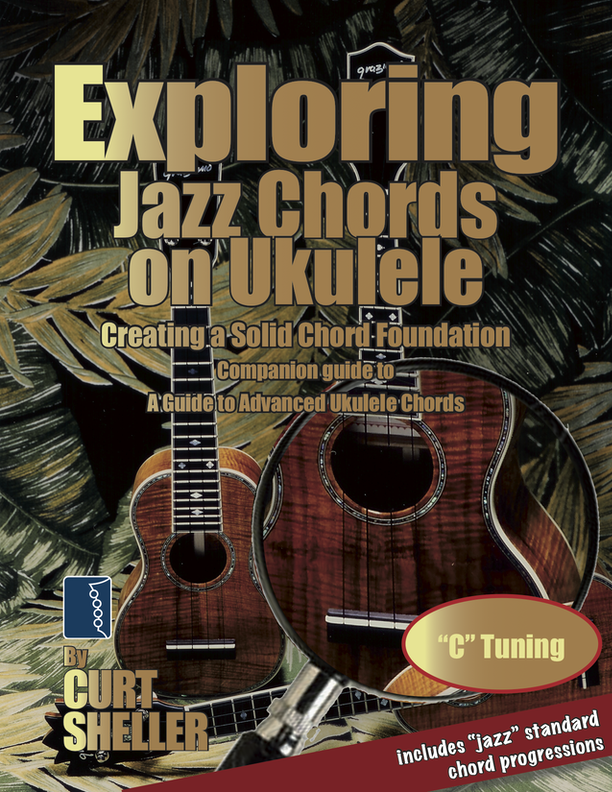
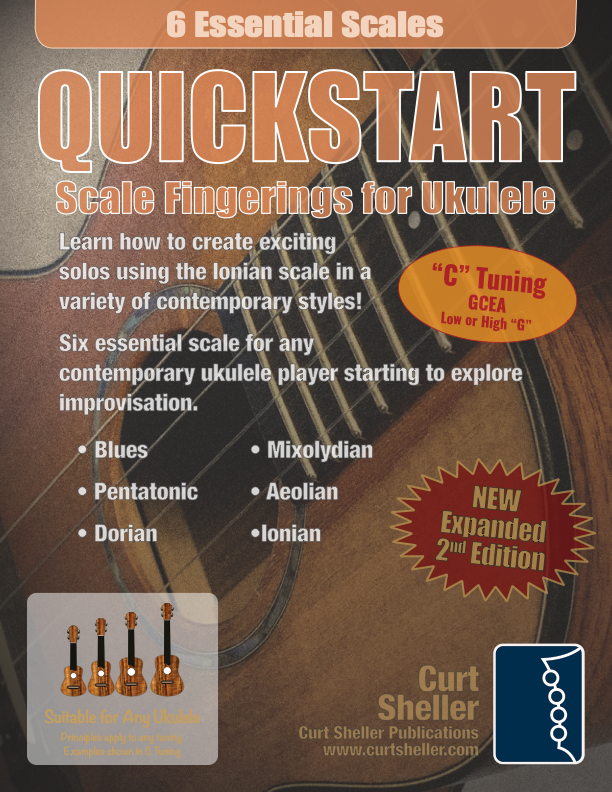
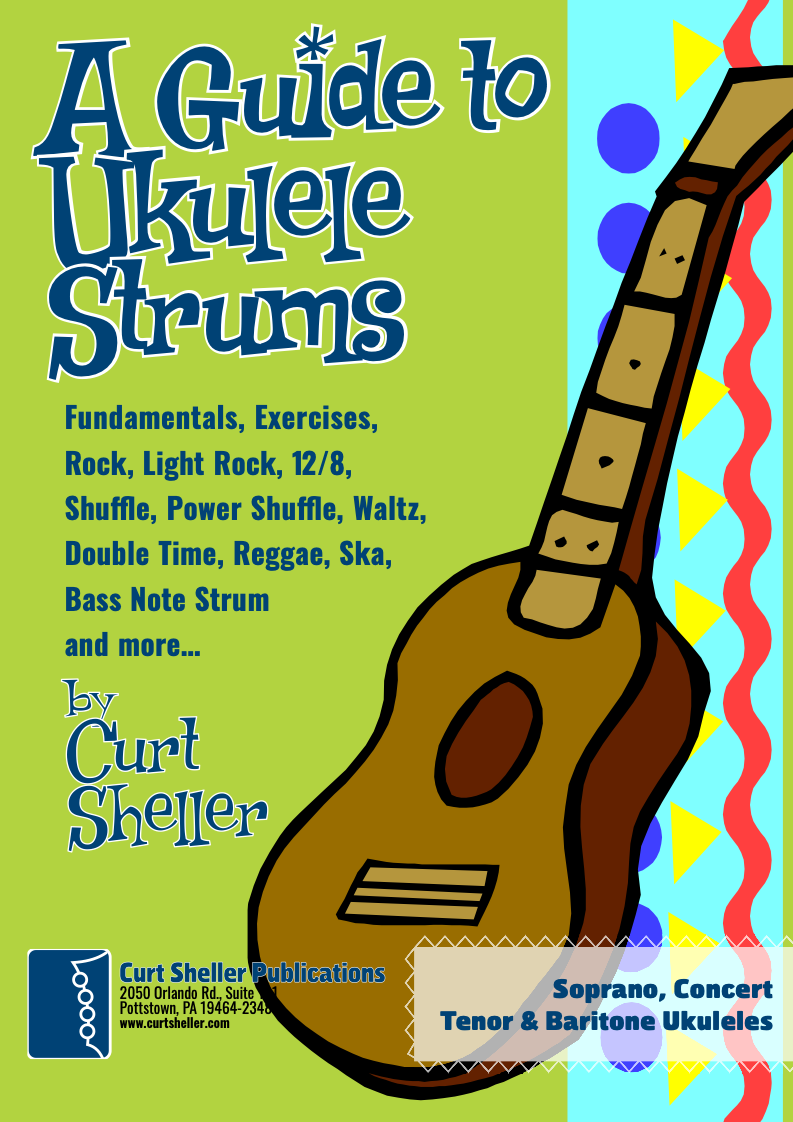
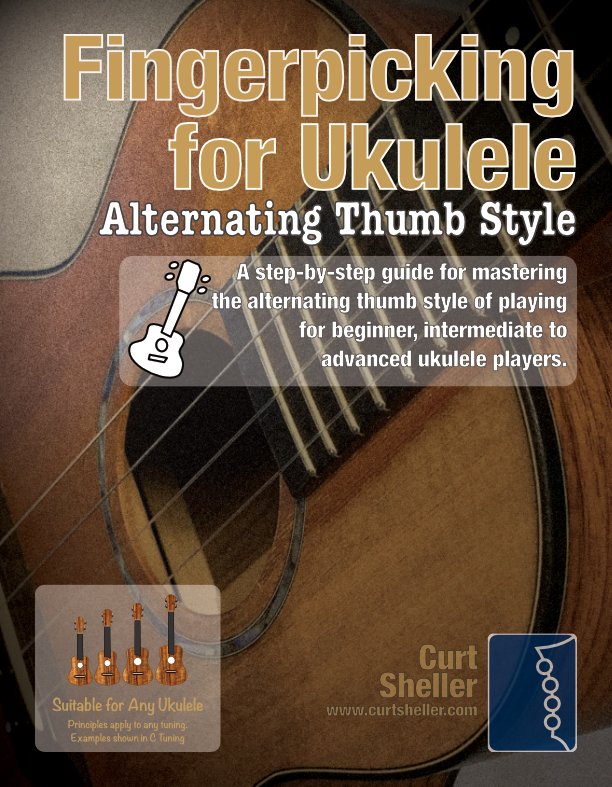













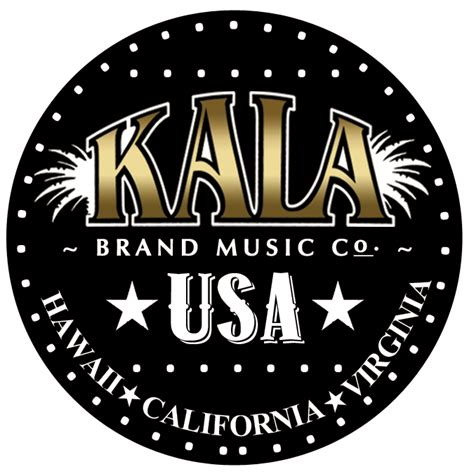


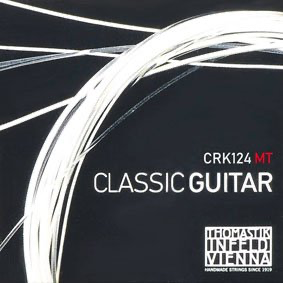
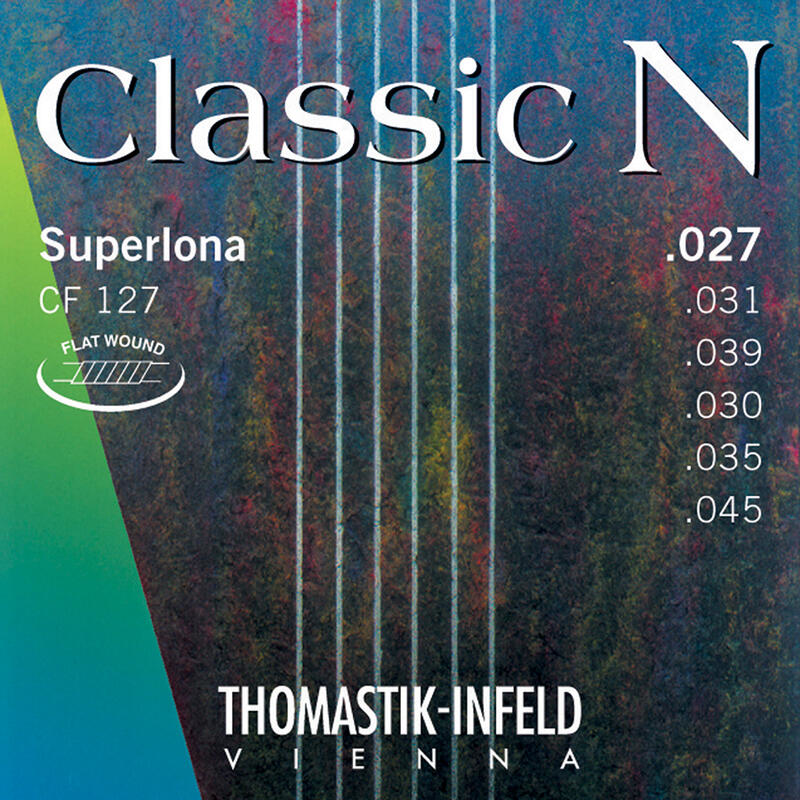
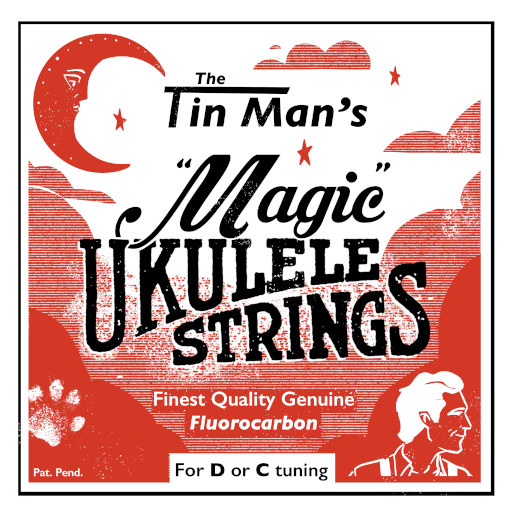
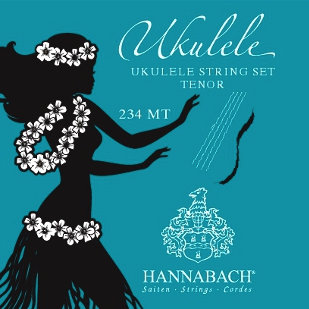
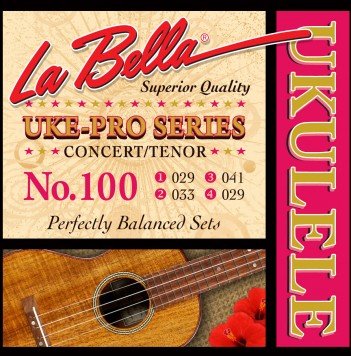
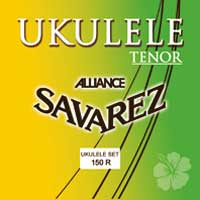






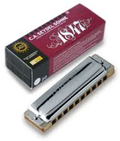
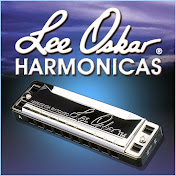





 supportukrainenow.org
supportukrainenow.org
